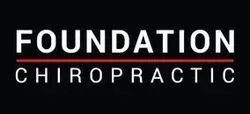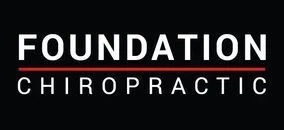Vitamin D, Immunity & Your Nervous System
- posted: Jul. 23, 2020
Keeping your immune system strong is important in fighting off viruses and diseases. There are many things one can do to help with this. A very important Vitamin, D, will be discussed as it plays a role in immune functioning. Another important aspect of helping with immunity is chiropractic care.
Vitamin D is a very important vitamin, but first is why is it so helpful to the body? What foods contain Vitamin D? And how does the body process it?
The National Institute for Health (NIH) reports that Vitamin D is fat-soluble (meaning it must be eaten with food) vitamin. The foods that it is found in include beef, cod liver oil, swordfish, salmon, sardines, eggs and swiss cheese (1).
Vitamin D is also produced in the body when ultraviolet rays from the sun strike the skin and trigger vitamin D synthesis (1).
Vitamin D is biologically inert and therefore must undergo two different reactions in the body for activation. The first reaction occurs in the liver and the next reaction occurs in the kidneys (1,2).
That Vitamin D must be converted biologically using the liver and then the kidneys can be problematic as one ages (3). According to studies the volume and blood flow to the liver gradually decreases and in fact, the liver volume decreases by 20–40% with age and in those 65 years or more approximately a 35% decrease compared with those aged less than 40 years occurs (4-7).
The second organ needed to help convert Vitamin D is the kidneys. Decreased kidney function also occurs more frequently in the elderly and therefore it is very important to monitor Vitamin D levels (8).
Vitamin D plays important roles in the body including monitoring cell growth, neuromuscular functioning as well as immune functioning (2,9,10). In fact it has also been shown to help in the reduction of inflammation as well as regulating cell differentiation and apoptosis (cell death) which should be a normal occurrence of the cell (2).
Chiropractic care also helps play a role in the body’s immune functioning. The central nervous system, which is housed in the skull (brain) and vertebral bones (spinal cord), controls every functioning system in the body (11,12,13,16).
When one of these vertebrae slip out of place, from a motor vehicle collision, fall, stress or repetitive motions it can cause inflammation to occur in that area of the spine. Inflammation causes redness, swelling, pain, increased temperature and altered function which are the five cardinal signs of inflammation (17). When this occurs a chiropractor can assist in helping the body to heal itself by adjusting the misaligned vertebrae back into place. Once this occurs the inflammation will begin to lessen and the central nervous system can then begin to function better (14).
The Central Nervous System (CNS) which consists of the brain and spinal cord regulates all other systems of the body including the immune system. Therefore it has been postulated that having a specific chiropractic adjustment may help to improve one’s nervous system which in turn may help one’s immune system (14,16).
A study put on by the Life Chiropractic College in Atlanta, GA measured CD4 cell counts in individuals’ blood of HIV positive individuals. Those who were in the adjustment group showed a 48% increase in CD4 cells versus the control group which experienced a 7.96% decrease in CD4 cell count (15). Although more research is needed this study is promising in showing how adjustments help the nervous system which helps improve the functioning of the immune system (15).
References:
- https://ods.od.nih.gov/factsheets/VitaminD-HealthProfessional/ Opens in new window
- Institute of Medicine, Food and Nutrition Board. Dietary Reference Intakes for Calcium and Vitamin D. Washington, DC: National Academy Press, 2010.
- https://www.ncbi.nlm.nih.gov/pmc/articles/PMC4736713/ Opens in new window
- Schmucker DL. Age-related changes in liver structure and function: implications for disease? Exp Gerontol. 2005;40:650–659.
- Wynne HA, Cope LH, Mutch E, et al. The effect of age upon liver volume and apparent liver blood flow in healthy man. Hepatology. 1989;9:297–301.
- Le Couteur DG, McLean AJ. The aging liver. Drug clearance and an oxygen diffusion barrier hypothesis. Clin Pharmacokinet. 1998;34:359–373.
- Iber FL, Murphy PA, Connor ES. Age-related changes in the gastrointestinal system. Effects on drug therapy. Drugs Aging. 1994;5:34–48.
- https://www.ncbi.nlm.nih.gov/pmc/articles/PMC4291282/ Opens in new window
- Holick MF. Vitamin D. In: Shils ME, Shike M, Ross AC, Caballero B, Cousins RJ, eds. Modern Nutrition in Health and Disease, 10th ed. Philadelphia: Lippincott Williams & Wilkins, 2006.
- Norman AW, Henry HH. Vitamin D. In: Bowman BA, Russell RM, eds. Present Knowledge in Nutrition, 9th ed. Washington DC: ILSI Press, 2006.
- Felton DL, Felton SY, Belonged DL, et al. "Noradrenergic sympathetic neural interactions with the immune system: structure and function." Immunol Rev. 1987 Dec;100:225-60.
- Pero R. "Medical Researcher Excited By CBSRF Project Results." The Chiropractic Journal, August 1989; 32.
- Murray DR, Irwin M, Reardon CA, et al. "Sympathetic and immune interactions during dynamic exercise. Mediation via a beta 2 - adrenergic-dependent mechanism." Circulation 1992 86(1): 203
- Brennan P, Graham M, Triano J, Hondras M. "Enhanced phagocytic cell respiratory bursts induced by spinal manipulation: Potential Role of Substance P." J Manip Physiolog Ther 1991; (14)7:399-400.
- Selano JL, Hightower BC, Pfleger B, Feeley-Collins K, Grostic JD. "The Effects of Specific Upper Cervical Adjustments on the CD4 Counts of HIV Positive Patients." The Chiro Research Journal; 3(1); 1994.
- Elenkov IJ, Wilder RL, Chrousos GP, Vizi ES: "The sympathetic nerve-an integrative interface between the two supersystems: the brain and the immune system." Pharmacol Rev 2000;52:295-63
- https://www.ncbi.nlm.nih.gov/pmc/articles/PMC4022040/ Opens in new window
Our Location
Foundation Chiropractic
1118 Outlet Collection Way #101
Auburn, WA 98001

